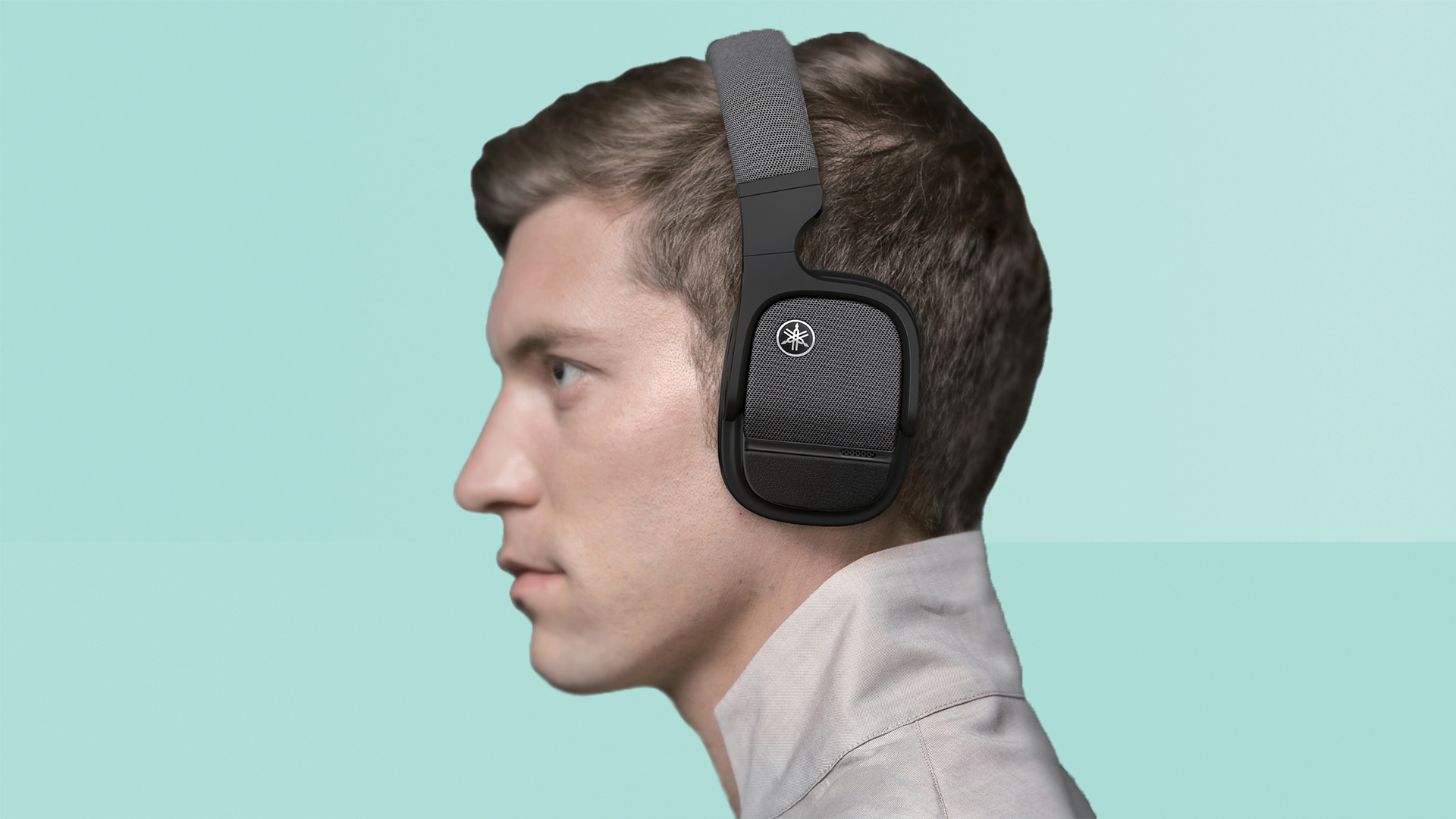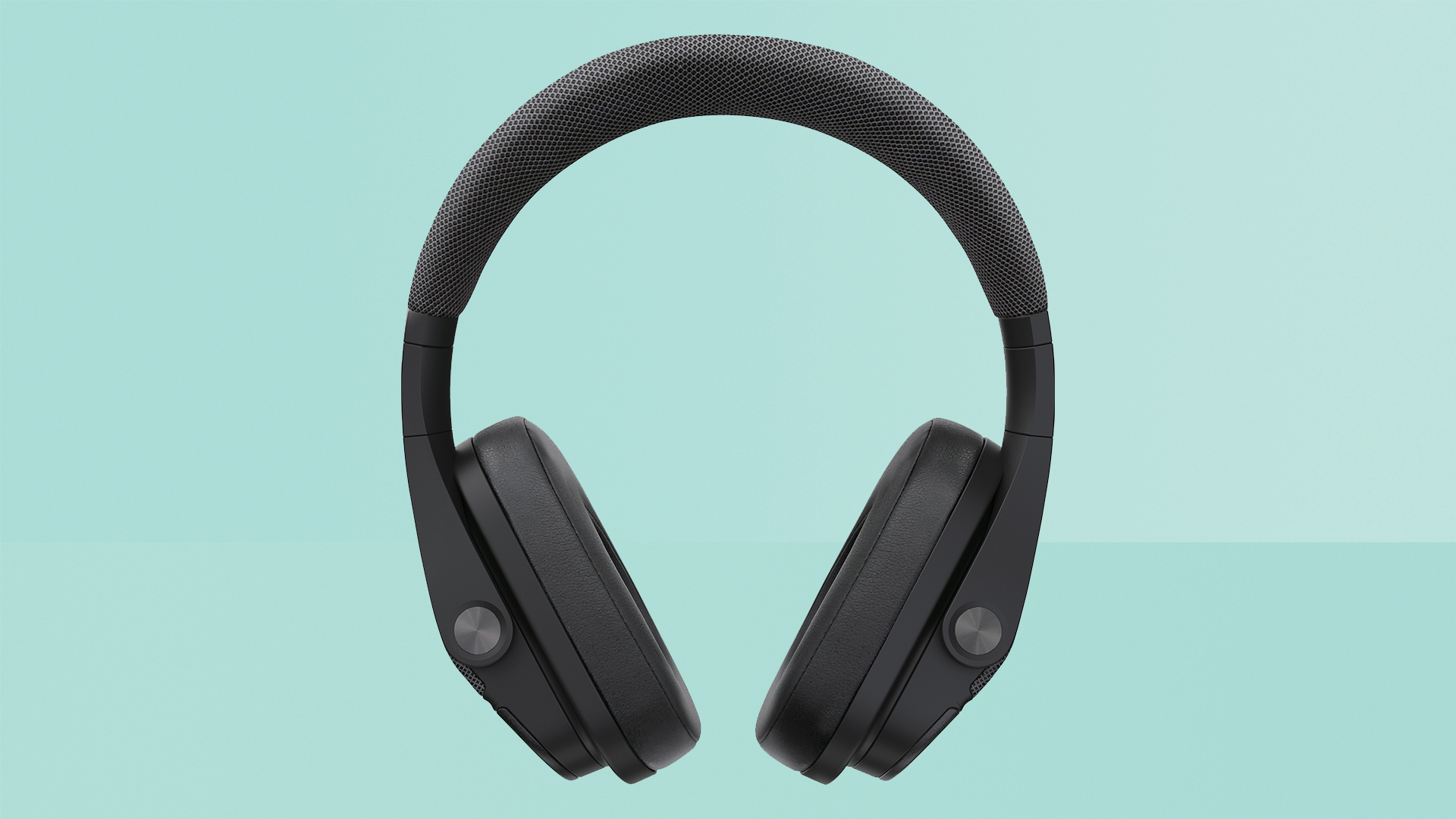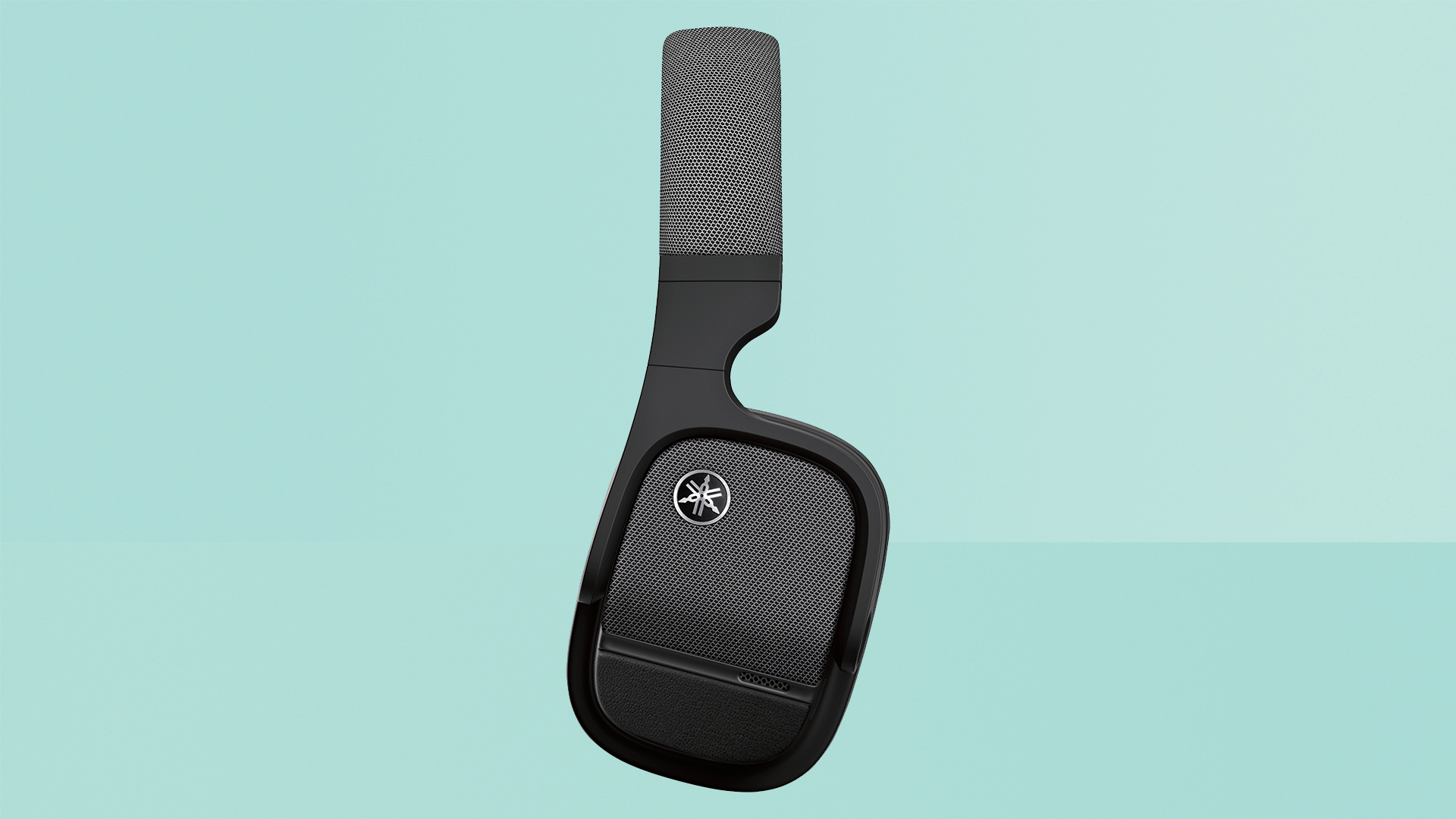Yamaha YH-L700A review: wireless headphones built for stunning 3D sound
The Yamaha YH-L700A are a real showcase for what spatial audio can add to music


The Yamaha YH-L700 will float your boat and rock your world if it’s 3D spatial audio you crave. But a pair of headphones this expensive should be just a sharp with every knife in its rack, and some elements don't cut it quite as well.
-
+
Great build and great finish from great materials
-
+
Big, punchy and deft sound
-
+
Impressive spatial audio effect
-
-
Relatively expensive
-
-
Mediocre noise-cancelling
-
-
Feel big even on quite big heads
Why you can trust T3

This Yamaha YH-L700 review gets its head inside a big, expensive and extremely well-specified pair of wireless noise-cancelling headphones. Headphones that are hi-res audio certified and, what’s more, are designed to give an impression of 3D ‘spatial audio’ from any and every source.
The Yamaha YH-L700A aren't exactly arriving in a world that's short of excellent wireless headphones – and many of the best noise-cancelling headphones are, in some ways, better specified than these. After all, there’s no EQ adjustment here, only binary noise-cancellation settings and unremarkable battery life.
But the ‘spatial audio’ aspect is something that's just getting started in headphones, and Yamaha is ahead of the pack here, and the way it does it is incredibly impressive, and immersive. It can reveal something new in tracks you knew inside out, and any headphones that can do this are worth a close look.
Yamaha has, through its home cinema equipment, demonstrated absolute mastery of EQ and digital sound processing algorithms before now – and the YH-L700 is just the latest evidence of its singular know-how. But it doesn't hit the same technical heights for staple features such as its crucial active noise cancellation, so whether these are the right headphones for you will be a question of priorities. Let's get into it.
Yamaha YH-L700A review: price & release date
The Yamaha YH-L700 were released in late 2021, and in the United Kingdom they’re priced at £449 or so. That translates to $499 for American customers, while Australian consumers are looking at AU$699.
You don’t have to look at those numbers for long to understand that Yamaha has pitched the YH-L700 well in excess of some of the acknowledged wireless over-ear active noise-cancelling class leaders – Sony’s WH-1000XM4 spring immediately to mind as being a notably cheaper option.
And while the Yamaha have a few features the Sony go without, justifying this lofty price isn’t going to be easy – especially with Apple AirPods Max coming in at around the same price these days, and also packing spatial audio tricks (but with no compromises on noise cancelling or sound quality).
Get all the latest news, reviews, deals and buying guides on gorgeous tech, home and active products from the T3 experts

Yamaha YH-L700A review: features & what's new
As far as features go, the YH-L700 are what we can confidently describe as ‘fully loaded’. If price could be based on the number of important-looking logos on the packaging, the Yamaha would already be worth every penny.
The obvious headlines concern configuration. The YH-L700 are wireless over-ear headphones, with active noise-cancellation circuitry, high-resolution audio certification, compatibility with Qualcomm’s aptX Adaptive wireless codec, and the ability to extract an impression of spatial audio from any incoming digital audio source, which means that can create a kind of 3D environment for the sound. That means it'll seem less like the audio is coming from drivers next to your ears, and more like it's coming from a speaker system around you.
They’re only hi-res audio certified when hard-wired, mind you. But given that their lithium-ion battery is good for anywhere between 11 hours (with all clever algorithms switched on) and 34 hours (with them all switched off), you shouldn’t really be reaching for the bundled 3.5mm cable unless you really want to. Perhaps during the 3.5 hours it takes the Yamaha to charge from ‘flat’ to ‘full’.
As well as the analogue audio cable, the YH-L700 are bundled with a flight adapter, a USB-A to USB-C charging cable and a pleasantly finished carry-case.
The YH-L700 use Bluetooth 5.0 for wireless connectivity, and as well as aptX Adaptive (which pretty much guarantees smooth audio/video synchronisation) there’s support for SBC and AAC codecs. Sound is delivered via a pair of 40mm full-range dynamic drivers.
Noise cancellation options extend to ‘off’, ‘on’ and ‘ambient sound’, while the ‘3D Sound Field’ spatial audio processing features seven very distinct ‘Surround Mode’ settings (‘audio room’, ‘concert hall’, ‘cinema’ and more). Anyone who’s heard one of Yamaha’s multichannel amplifiers knows the company is masterful where digital sound processing is concerned, so these are no gimmick. And the option of ‘Head Tracking’ when listening with the ‘3D Sound Field’ activated (which adjusts the audio presentation relative to the position of your head) is also intriguing – we've seen a version of it implemented in the AirPods Max, AirPods Pro and AirPods 3rd Gen.
There are a couple of other specification niceties, too. ‘Listening Optimizer’ uses some of the numerous mics handling noise cancelling and call quality to measure the seal of and leakage from the ear-cup in order to adjust sound on the fly, while ‘Listening Care’ wants to optimise the volume levels based on calculations taken every 0.7m/s or so, to protect hearing over time against those who like to crank the volume up.
So far, so thorough and impressive. But strangely, there's no detection for when you take them off to automatically pause and turn themselves off – a pretty standard feature these days.

Yamaha YH-L700A review: performance
It seems most appropriate to start listening to the YH-L700 as if they are ‘just another’ pair of wireless active noise-cancelling headphones – and that’s in stereo. And when playing a nice chunky TIDAL Masters digital audio file, they waste little time in establishing their credentials as a full-bodied, robust and energetic listen.
Tonally, the Yamaha exhibit real balance and conviction. At the bottom of the frequency range they’re chunky, punchy and lavishly detailed – and there’s nothing ponderous about the way the bass sounds here. Control and manoeuvrability is impressive, and the fine detail differentiation is great too. The YH-L700 are a power-lifter and a gymnast all in one.
The midrange is just as straight-edged, just as controlled and just as informative – there’s more than enough detail revealed to pack a vocalist’s delivery with character and conviction. Integration with the lower frequencies is smooth, and there’s plenty of space available on the well-defined soundstage to let a singer do their thing in comfort.
At the top end there’s well-supervised bite and attack on display – the Yamaha aren’t the last word in treble potency, but neither are they prone to edginess or hardness if you press on, volume-wise. Once again they’re loaded with detail regarding texture and timbre, and once again they integrate seamlessly with the rest of the frequency range.
As far as dynamic ability goes, too, there’s an awful lot to admire here. As well as the deep-breathing ability to handle broad ‘very-quiet-to-very-loud’ dynamics with something approaching effortlessness, the YH-L700 also demonstrate real understanding of much more minor, second-stage harmonic dynamics that can give a piece of music proper animation.
About the only area where the Yamaha sound is less than absolutely assured, in fact, is in the management and expression of rhythms. They don’t have quite the hip-swinging fluency of the best alternatives, and as a consequence the most rhythm-reliant music can sound just a little inhibited.
Listening to the same music with ‘3D Sound Field’ activated is quite a radically different experience. The various listening ‘environments’ are distinct from each other, and undeniably ‘spatial’ in the way they deliver sound. In some cases the result is a recording that’s easier to peer into to examine the individual elements, and in some cases the result is a recording that’s more difficult to follow – but in every case the result is a more immersive experience. Whether it’s preferable to the stereo alternative is entirely down to the individual, but there's no question that it's effective.
‘Head Tracking’ isn’t quite so convincing. Face ‘forwards’ and both earcups are contributing equal amounts of information to your spatial audio experience, but turn your head to the right and the left earcup begins to dominate. That’s because it’s now facing ‘forwards’, presumably – but the overall effect is pretty much the same as fiddling with the ‘balance’ control that’s fitted to many amplifiers. This isn't quite as effective as the way AirPods Max very clearly encircles your head with
The active noise cancellation doesn’t exactly hit the bullseye, either. Unless you want more external sound than you’d otherwise get (‘ambient sound’ is what Yamaha calls it), you’ve only the ‘on’ or ‘off’ positions – and while switching to ‘on’ unarguably reduces the amount of external sound you hear, it’s not as effective as many alternative designs (like Sony, for example, or the best Bose headphones in particular) can manage. If this is a big requirement from your next pair of pricey over-ear headphones, you’ll think long and hard about whether the Yamaha YH-L700 are for you.

Yamaha YH-L700A review: design & usability
These are big headphones, and the design route down which Yamaha has gone does nothing to minimise their visual or physical impact.
As an object, mind you, the YH-L700 look and feel expensive. The woven fabric used for padded headband and on the outside of the earcups looks good and feels indulgent, as does the leather covering the earpads. Even the plastic which constitutes the majority of the construction seems expensive. And the 330g weight is nicely judged, too – it makes the Yamaha feel like a premium product without making it difficult to wear for longer periods.
Well, as long as your head isn’t too small, that is. There’s plenty of adjustment in the headband, but even at its smallest setting those with less generously proportioned heads may find the YH-L700 overwhelming.
Each squared-off earcup has a mic opening, and on the left-hand side there’s a physical control for cycling through the noise-cancellation settings along with a 3.5mm input. On the right you’ll find a button for ‘power on/off/Bluetooth pairing’ and another to scroll through your ‘3D Sound Field’ options. The USB-C input is on this earcup too, and on the earcup’s surface are three multifunction controls - they deal with ‘volume up/down’, ‘play/pause’, skip forwards/backwards’ and ‘answer/end/reject call’.
All of these functions can be demanded of Google Assistant or Siri voice assistants, and they also appear in Yamaha’s ‘Headphones Controller’ app. In addition, the app lets you switch functions like ‘head tracking’ on or off. It’s not the last word in functionality, this app (in other words, it’s not a Sony headphones app) but it’s a clean, useful and stable interface.
Yamaha YH-L700A review: verdict
The perceived value and extensive functionality go quite a long way to justifying that eye-watering price, and if you’re a big believer in spatial audio, it delivers that from any source (unlike AirPods Max).
But for stereo listening, for noise-cancellation and for battery life, the Yamaha YH-L700 look optimistically priced.
Yamaha YH-L700A review: also consider
The only reason we’re a bit jaded or blasé about Sony’s WH-1000XM4 wireless active noise-cancelling headphones is that we do nothing but recommend them. They don’t actually lead the field in any single area – they can be bettered for out-and-out sound quality just as certainly as they can be for noise-cancelling and for battery life – but as far as across-the-board excellence goes, they’re difficult to lay a glove on. Nothing else does everything as well. Here's our full Sony WH-1000XM4 review.
And there's AirPods Max, as already mentioned. They cost even more than the Yamaha, but the sound quality is exceptional, and the spatial audio effect when listening to Dolby-tracked movies or music from iPhone and iPad is incredibly immersive – especially with movies, where it really feels like the sound is coming from a home theatre system rather than right on your ears. With music, it's more divisive still. But at the time of writing, you can only get this effect when connected to Apple gear, so Android users looking for 3D sound need not apply. Here's our full AirPods Max review.
Simon Lucas is a freelance technology journalist and consultant, with particular emphasis on the audio/video aspects of home entertainment. Before embracing the carefree life of the freelancer, he was editor of What Hi-Fi? magazine and website – since then, he's written for titles such as Wired, Metro, the Guardian and Stuff, among many others. Should he find himself with a spare moment, Simon likes nothing more than publishing and then quickly deleting tweets about the state of the nation (in general), the state of Aston Villa (in particular) and the state of his partner's cat.
